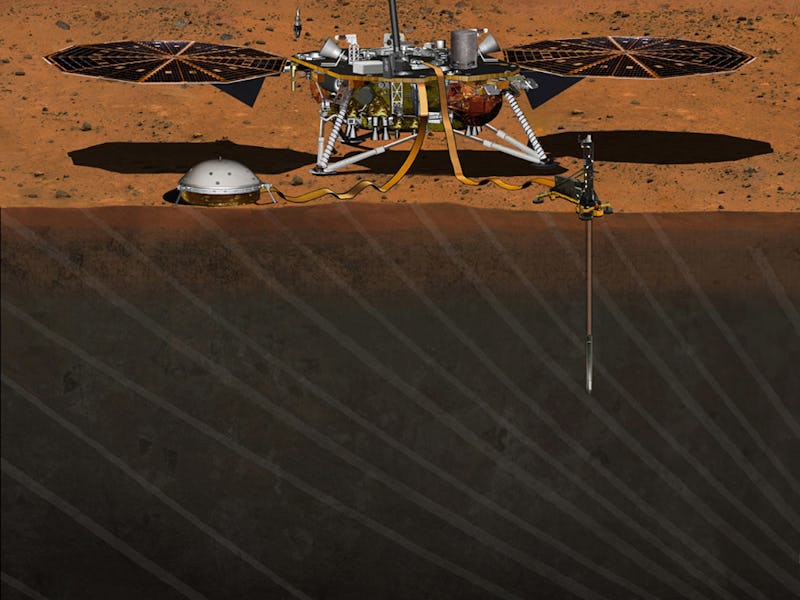NASA Reschedules Delayed InSight Mars Mission to May 2018

NASA’s Mars InSight mission is two entire years behind schedule, and for months we’ve had no clue when it was actually set to go the red planet. Finally, NASA announced on Friday that the mission would launch in May of 2018.
It’s welcome news for anyone who feared that the technical difficulties that prevented the planned March 2016 launch would derail the Interior Exploration using Seismic Investigations, Geodesy and Heat Transport (InSight) project completely.
In December 2015, NASA announced that it would not make the planned deadline because the spacecraft’s primary scientific instrument, called the Seismic Experiment for Interior Structure or SEIS, failed twice during testing.
When an interplanetary launch is delayed, it’s not a simple matter of making the necessary repairs and trying again. The failure meant that the space agency would have to wait years for Earth and Mars to literally realign — a fact that put the mission’s future in jeopardy.
NASA’s budget for the InSight mission was $675 million, but the additional costs associated with the repairs and delay have added $154 million to that total. No other missions have been affected by the increased cost, although it could impact opportunities for future missions.
Still, the agency felt that spending the extra dough was a better use of resources than putting the kibosh on InSight altogether. The mission’s purpose is to study the geological forces deep within Mars to gain a better understanding of how rocky planets, including Earth, form and evolve. The data collected will lay groundwork for future manned missions to the Red Planet, and maybe even offer clues in the search for alien life.
The craft’s SEIS instrument is designed to take detailed seismic readings by detecting ground movements as small as half the radius of a hydrogen atom. In order to be that precise, the sensors must be housed in a perfect vacuum. It’s the vacuum seal that failed in tests designed to simulate the harsh environmental conditions on Mars.
NASA is pretty confident its engineers at the Jet Propulsion Laboratory can work out the bugs by the new launch date. The spacecraft is scheduled for landing on Mars on November 26, 2018.